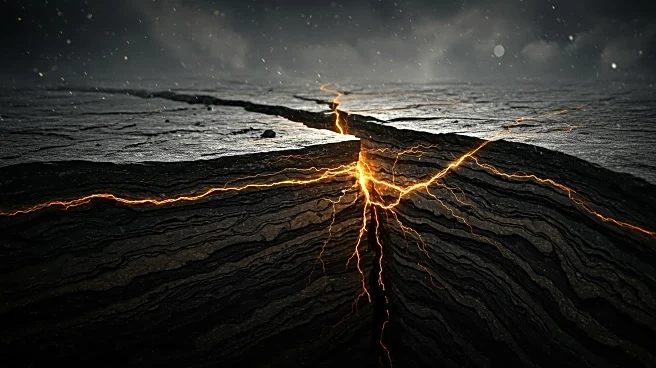What's Happening?
Recent research has revealed that the Tintina fault in Canada's Yukon, previously considered inactive, may be capable of producing a significant earthquake. The fault, which stretches approximately 620 miles from British Columbia to Alaska, has shown signs of past seismic activity within the last 2.6 million years. Researchers from the University of Victoria have used advanced satellite and lidar mapping to uncover fault scarps, indicating past earthquakes. The study suggests that the fault has accumulated a slip deficit of about 20 feet since its last major earthquake, raising concerns about potential future seismic activity.
Why It's Important?
The discovery of the Tintina fault's potential for seismic activity has significant implications for the region's safety and infrastructure. A rupture could exceed magnitude 7.5, causing severe shaking and damage in areas like Dawson City, affecting highways and mining operations. Despite these risks, the fault is not currently listed in Canada's National Seismic Hazard Model, which guides building codes and engineering standards. Incorporating these findings into future updates could improve emergency planning and preparedness, potentially mitigating the impact of a major earthquake.
What's Next?
Researchers plan to excavate a paleoseismic trench across the Tintina fault to better understand its recurrence rate and the frequency of large earthquakes. This will involve examining offset sediment layers to date past quakes, providing a clearer picture of the fault's activity. The findings will be shared with local governments to enhance emergency planning and inform future updates to seismic hazard models.












